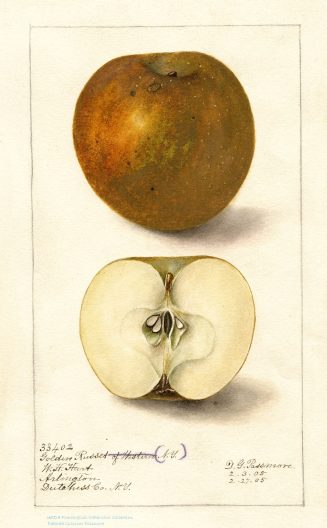
Is there such a thing as an apple-pear hybrid? I have seen some apples with russeted skin referred to as ‘pear apples.’
No, the russeting associated with particular heirloom varieties of apple is neither a disorder nor a sign that the apples are part pear. As with pears, apples come in many shapes, colors, and sizes, and some have smooth skin while others have rougher russeted skin. Examples of russet varieties of apple include Ashmead’s Kernel, Egremont Russet, Golden Russet, Roxbury Russet, and Esopus Spitzenburg. Some russet apples bear a superficial resemblance to Asian pears.
According to fruit expert Orin Martin, “While not all russets taste alike, they do share some taste characteristics. They usually start out sugary, followed by balancing acidity. Volatile aromatic oils usually factor in. The russet experience can make the eater feel they have taken a temperate zone, deciduous fruit and sailed off to subtropical latitudes where the evergreen fruits rule supreme: citrus (especially lemon), guava, banana, pineapple, etc. At the same time (in sequence) you are experiencing the sugar, texture and cell grit of a pear. The latter sensation is most pronounced with Hudson’s Golden Gem.”
Russet apples have a long history. The Brown Russet, also known as Royal Russet, goes back as far as the 1500s in England. In Shakespeare’s Henry IV, Part 2, Act V, Scene 3, they are referred to as leather-coats:
Shallow (to Falstaff): “Nay you shall see mine orchard, where, in an arbour, we will eat a last year’s pippin of my own graffing, with a dish of caraways, and so forth. [….]”
Davey: “There’s a dish of leather-coats for you.”